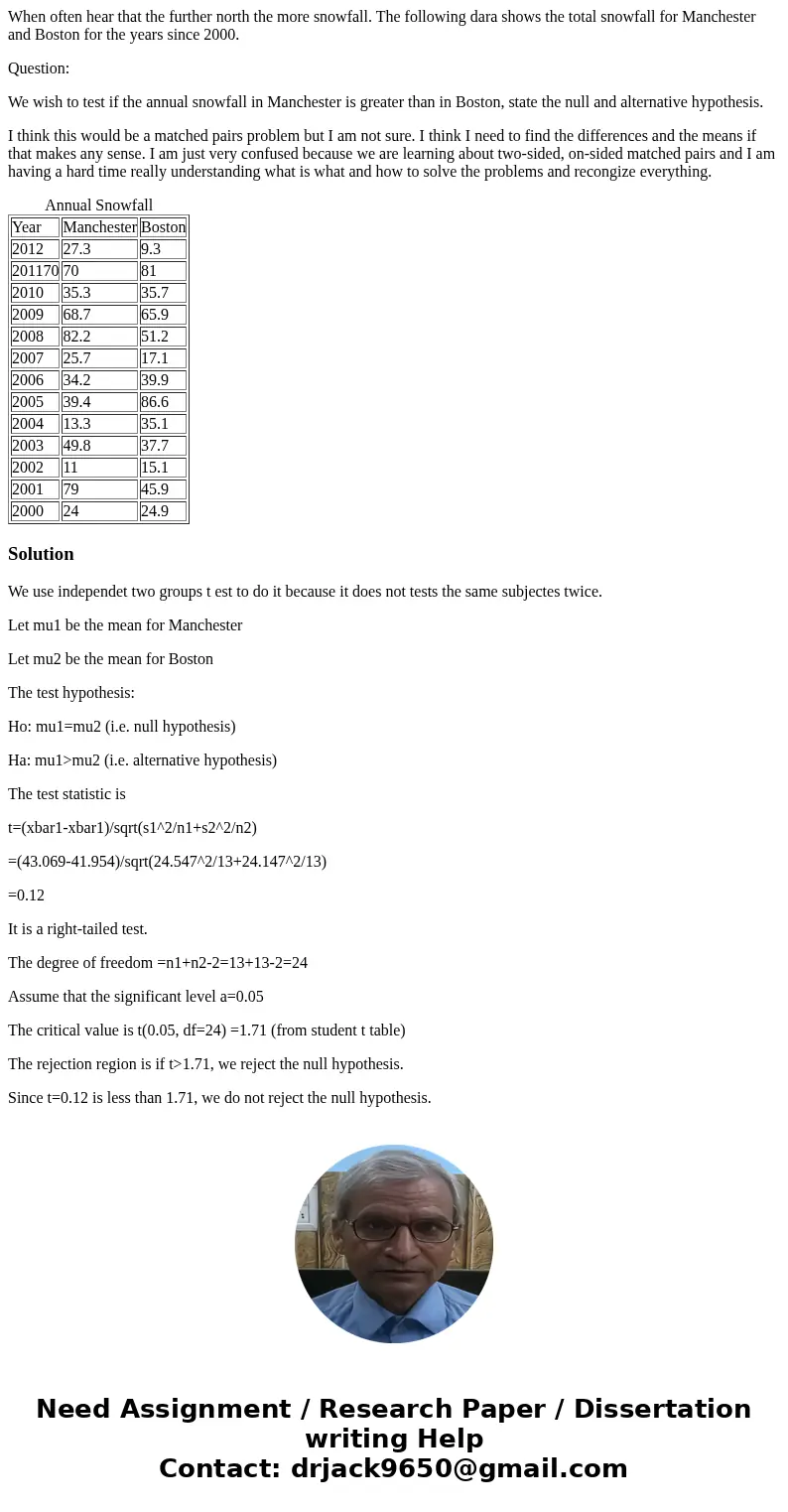When often hear that the further north the more snowfall The
When often hear that the further north the more snowfall. The following dara shows the total snowfall for Manchester and Boston for the years since 2000.
Question:
We wish to test if the annual snowfall in Manchester is greater than in Boston, state the null and alternative hypothesis.
I think this would be a matched pairs problem but I am not sure. I think I need to find the differences and the means if that makes any sense. I am just very confused because we are learning about two-sided, on-sided matched pairs and I am having a hard time really understanding what is what and how to solve the problems and recongize everything.
| Year | Manchester | Boston |
| 2012 | 27.3 | 9.3 |
| 201170 | 70 | 81 |
| 2010 | 35.3 | 35.7 |
| 2009 | 68.7 | 65.9 |
| 2008 | 82.2 | 51.2 |
| 2007 | 25.7 | 17.1 |
| 2006 | 34.2 | 39.9 |
| 2005 | 39.4 | 86.6 |
| 2004 | 13.3 | 35.1 |
| 2003 | 49.8 | 37.7 |
| 2002 | 11 | 15.1 |
| 2001 | 79 | 45.9 |
| 2000 | 24 | 24.9 |
Solution
We use independet two groups t est to do it because it does not tests the same subjectes twice.
Let mu1 be the mean for Manchester
Let mu2 be the mean for Boston
The test hypothesis:
Ho: mu1=mu2 (i.e. null hypothesis)
Ha: mu1>mu2 (i.e. alternative hypothesis)
The test statistic is
t=(xbar1-xbar1)/sqrt(s1^2/n1+s2^2/n2)
=(43.069-41.954)/sqrt(24.547^2/13+24.147^2/13)
=0.12
It is a right-tailed test.
The degree of freedom =n1+n2-2=13+13-2=24
Assume that the significant level a=0.05
The critical value is t(0.05, df=24) =1.71 (from student t table)
The rejection region is if t>1.71, we reject the null hypothesis.
Since t=0.12 is less than 1.71, we do not reject the null hypothesis.
So we can not conclude that the annual snowfall in Manchester is greater than in Boston
| Manchester | Boston | |
| 43.069 | 41.954 | mean |
| 24.547 | 24.147 | std. dev. |
| 13 | 13 | n |

 Homework Sourse
Homework Sourse